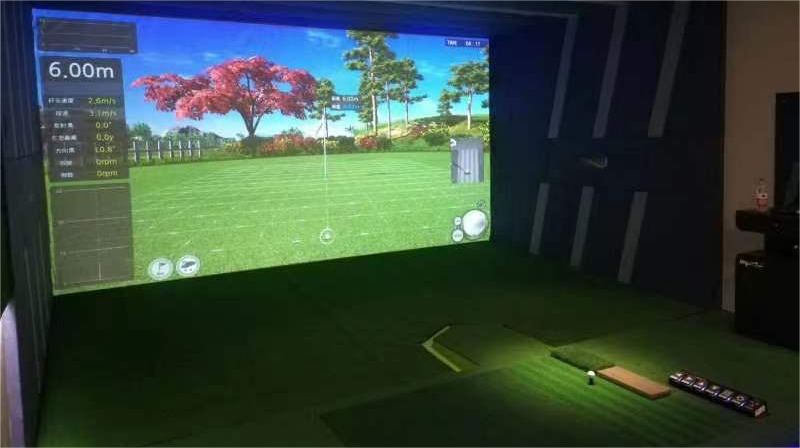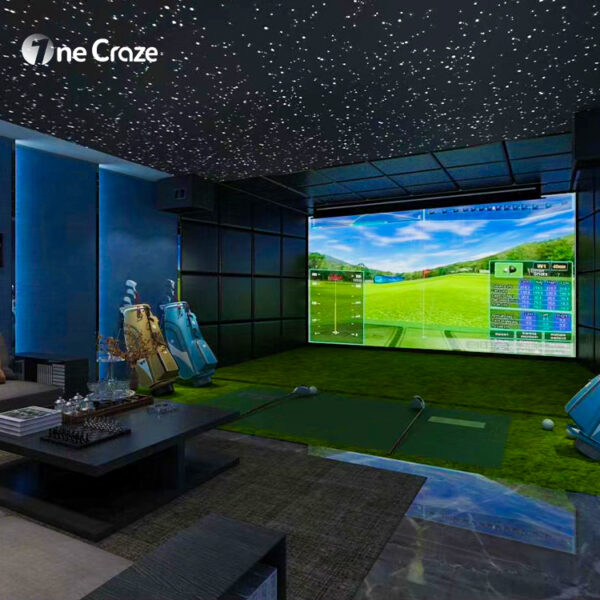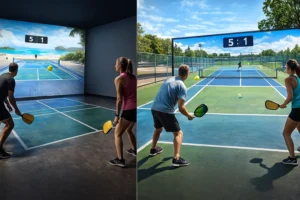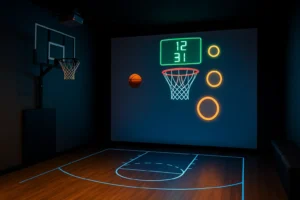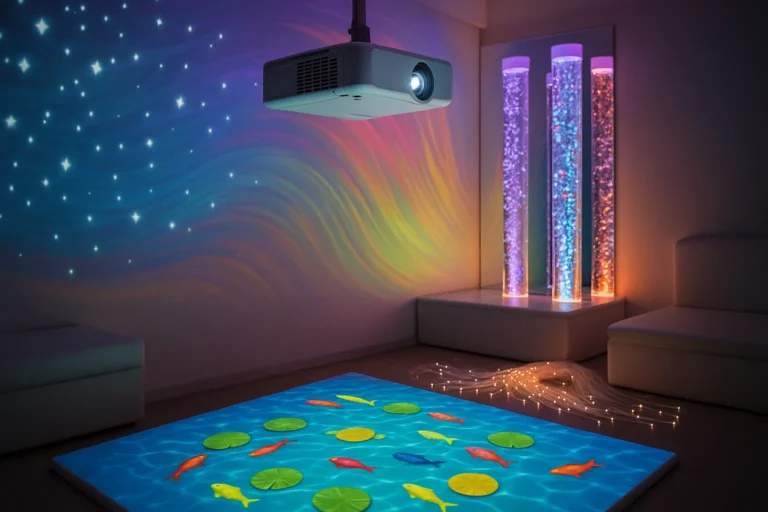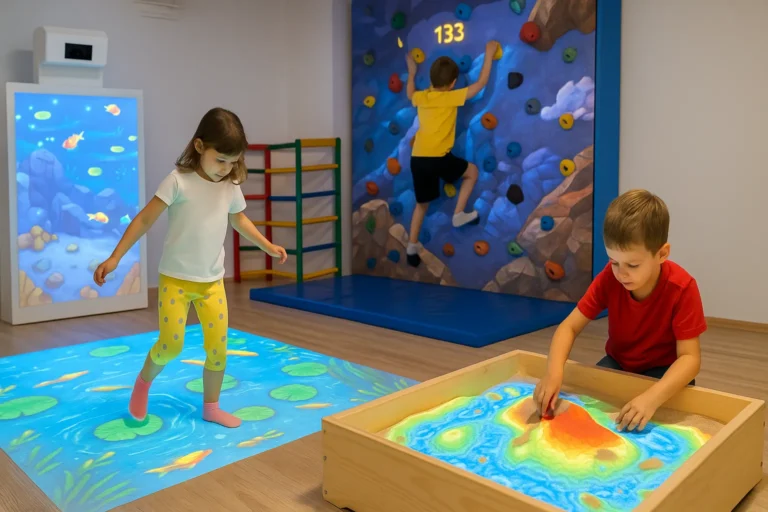Why Does Golf Simulator Baffles Sagging Matter?
Golf simulators offer a fantastic way to experience the game indoors, but issues like sagging baffles can seriously affect the quality of your virtual game. In this article, we’ll dive into why golf simulator baffles sagging happens, how it impacts your system’s performance, and ways to fix or prevent it. Whether you’re a golf enthusiast looking to improve your home setup, or a business trying to provide the best experience for clients, understanding these factors is crucial.
Understanding Golf Simulator Baffle Enclosure Screens
What is a Golf Simulator Baffle Enclosure Screen?
A golf simulator baffle enclosure screen is a vital part of your simulation system. It serves multiple functions, including ball deflection, noise reduction, and providing a boundary that mimics a real golf environment. In the latest models, these screens come with advanced materials designed to withstand high-speed impacts, making them durable and long-lasting.
Key Features of a Quality Baffle Enclosure Screen:
- Durability: Ensures long-term use and resists wear from repeated hits.
- Sound Absorption: Reduces the noise of the ball hitting the screen.
- Size and Fit: Can be custom-fit to your simulator setup for an immersive experience.
Many professional suppliers offer a range of options for golf simulator baffle enclosure screens, so whether you’re upgrading your home setup or outfitting a commercial space, finding the right fit is crucial.
Golf Simulator Baffles Sagging for Business: How to Address the Issue
What Causes Golf Simulator Baffles to Sag?
For businesses that install golf simulators, baffle sagging can present a significant problem. When baffles sag, it can affect the visual experience, reduce the accuracy of the system, and make the overall game feel less authentic. But why does this happen?
Common Causes of Baffle Sagging:
- Improper Installation: If the baffles are not installed tightly, they can droop over time.
- Low-Quality Materials: Using inferior materials for the baffles can cause them to lose their shape, especially under constant strain.
- High Humidity: In certain environments, the baffles may absorb moisture, making them heavier and more likely to sag.
- Wear and Tear: Over time, the fabric and components of the baffle can lose their elasticity and begin to droop.
How to Fix Baffle Sagging in a Business Setting
For businesses, maintaining a high-quality experience for clients is essential. Here’s how to address sagging:
- Ensure Proper Installation: Have an expert handle the installation, making sure the baffles are tightly secured.
- Use High-Quality Screens: Invest in quality baffle enclosure screens made from durable, sag-resistant materials.
- Regular Maintenance: Check the screens periodically to make sure they remain tight and free of damage. Replace any sagging or damaged screens immediately.
- Consider Custom Fit: If your simulator room has an unusual size or shape, consider ordering custom screens that fit more snugly.
Installing Golf Simulator Screens in Rooms: Key Considerations
Why Room Dimensions Matter
When setting up a golf simulator at home or for a business, choosing the right room is one of the most important factors. The space must be large enough to accommodate the simulator system, the screen, and the baffle enclosure.
Key Installation Tips:
- Measure the Room: Ensure there is enough room for both the simulator and the baffle enclosure to be installed without any obstructions.
- Ceiling Height: A higher ceiling is often better as it prevents the baffles from being pulled too tightly.
- Wall Material: Hard, reflective walls can sometimes cause sound distortions, so consider acoustic treatment if needed.
Installing the Golf Simulator System
Installing a golf simulator system with the right enclosure and baffle setup isn’t just about fitting the equipment into the room. You need to ensure that the system integrates seamlessly, providing an optimal experience. Wo

Indoor Golf Simulator Baffles Sagging Causes: A Deeper Look
What’s Really Behind the Sagging?
Indoor golf simulator setups have their own set of challenges that contribute to baffle sagging. While it may seem like a simple issue, it’s often caused by a combination of environmental and mechanical factors.
Additional Causes:
- Temperature Fluctuations: Drastic temperature changes can cause the materials to shrink or expand, leading to sagging.
- Improper Storage: If the screens are not stored properly when not in use, the fabric can lose its shape, especially if they’re not rolled or folded correctly.
- Inadequate Tensioning Systems: Low-quality tensioning systems can fail to keep the baffles taut, leading to eventual sagging.
Preventing Golf Simulator Baffles Sagging: Best Practices
How Can You Prevent Baffle Sagging?
Now that we understand the causes, let’s talk about how to prevent baffle sagging in the first place.
Prevention Tips:
- Choose the Right Materials: Look for baffle screens made from durable, moisture-resistant materials. These are more likely to resist sagging over time.
- Install Tension Systems: A tensioning system can keep your baffles tight and firm, which helps prevent sagging.
- Ensure Proper Installation: Professional installation ensures that your baffle enclosure is tight and stays in place, reducing the chances of sagging.
- Regular Inspections: Perform periodic checks to ensure your baffles are still properly installed and in good condition.
Choosing the Best Golf Simulator System: Price, Software, and Suppliers
What’s the Best Price for a Golf Simulator System?
The price of a golf simulator system can vary significantly depending on the software, hardware, and quality of the screens and baffles. If you’re looking to buy the latest and best system, consider these factors:
Price Considerations:
- Entry-Level Simulators: These start around $1,000 to $2,000 and typically come with basic software and a smaller baffle enclosure.
- Mid-Range Systems: These range from $3,000 to $10,000 and include better software and more durable baffles.
- High-End Systems: For top-of-the-line simulators, expect to pay $15,000 or more. These often include commercial-grade baffles and enclosures.
The key to preventing sagging is ensuring that you use high-quality materials for the baffles, install them properly with the correct tensioning system, and regularly inspect them for wear and tear.
Yes, it’s possible to install a golf simulator screen yourself if you have the necessary tools and knowledge. However, for best results, you may want to consider professional installation, especially if you’re using high-end screens and enclosures.
Polyester and nylon are commonly used materials for golf simulator baffles due to their strength, elasticity, and resistance to sagging. Be sure to buy from reputable suppliers for the best quality.

